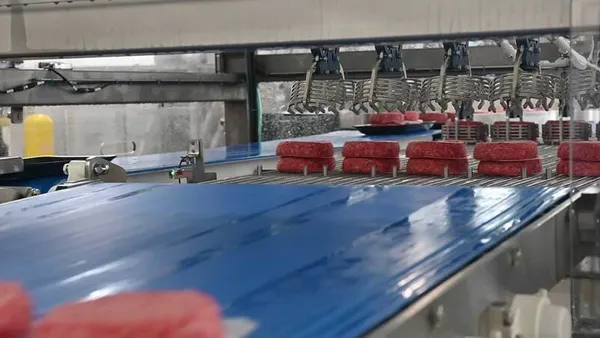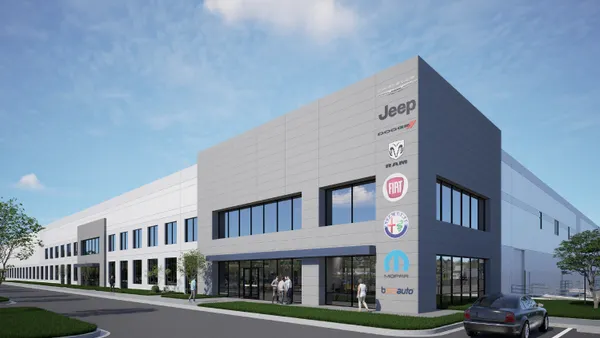Dive Brief:
- DHL is expanding its use of Locus Robotics assisted picking robots, aiming to have 2,000 of the machines operational in its facilities in 2022, DHL announced Wednesday.
- DHL expects to have robots in "more than 20" facilities by the end of 2021, according to the release. Locus Robotics already has 500 robots deployed at 13 DHL facilities where the two companies have an existing contract, Locus Robotics' CMO Karen Leavitt said. It expects 500 more to be deployed by the end of 2021 and the remaining 1,000 will roll out in 2022.
- "More locations have already been identified with concrete implementation roadmaps for the remaining robots, which we will deploy in 2022," Markus Voss, Global CIO and COO at DHL Supply Chain, said in a statement. "However, the overall potential for assisted picking robots in our DHL warehouses is much bigger, so we are confident that we will meet the targets we have set ourselves together with Locus Robotics."
Dive Insight:
DHL is Locus Robotics' largest customer, as well as one of the longest-standing relationships. DHL became an official Locus customer in 2017 and, in the accompanying announcement, highlighted the efficiency improvements. One executive said at the time that "one of our sites has increased productivity two-fold."
Over the last three years, DHL and Locus Robotics have spoken about what exactly these improvements look like in the warehouses where the robots are already functioning. One warehouse was able to improve its pick speed from 78 unit picks per hour without the machines to 150 after their implementation.
The productivity gains come from how the Locus Robotics solution allows a warehouse to redesign its picking process.
"Without the robots, the humans are spending a lot of their time — the bulk of their time — walking, which is not picking," Leavitt said. "And we're able to eliminate about 60% of their walking time."
A warehouse using the solution will keep human pickers in a particular zone and robots will travel to the location of the item in an order currently being fulfilled. The human worker will then put orders on the robots that will then take the orders to a packing station.
"It's no longer a test," Leavitt said. She later added that this "is not something that our customers are proofing anymore or piloting any longer. Our customers are on their fifth or sixth, or in the case of DHL, their 13th or 15th, or 20th warehouse."
Proving the validity of the robots was a data-driven process, though, that looked at a number of variables that could be improved in a warehouse with the addition of the tools, she said.
DHL and Locus Robotics each have their own solution design teams that have worked closely together over the years. The DHL team is not tied to any one region or warehouse and is focused on a vision of general warehouse digitization, Leavitt said.
The companies have worked together to form a Concept of Operations to calculate what improvements a Locus Robotics solution could provide to a given warehouse. They then set goals on performance metrics and calculate how many robots it will take to achieve those goals, while estimating the ROI.
DHL makes the final decision on when to deploy the robots, based on the products at a specific warehouse, the cube of the product, the warehouse's volume and the order processing process, among other variables, Leavitt said.
"Ultimately, they'll get rolled out over broader and broader ranges of warehouses," she said. "But the idea is to go for the most bang for the buck, initially."
The pandemic has increased interest in robotics as companies across industries look to keep up productivity metrics while also complying with social distancing measures. One survey by Honeywell and KRC Research found that 51% of companies that manage warehouses, distribution centers or fulfillment centers say the coronavirus pandemic has made their company more willing to invest in automation.
Still, the percentage of respondents who report using robotics in the annual MHI report has been fairly flat for the last five years. In 2016, 35% of respondents reported that robotics and automation were already in use at their companies. By 2021, this figure had grown just three percentage points to 38%. But robotics was one of the top three areas that respondents said they had plans to increase investment, according to the 2021 MHI survey.















